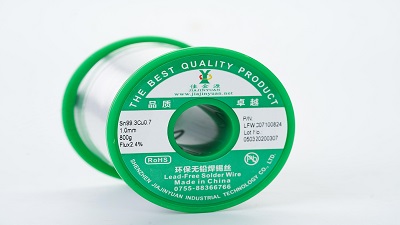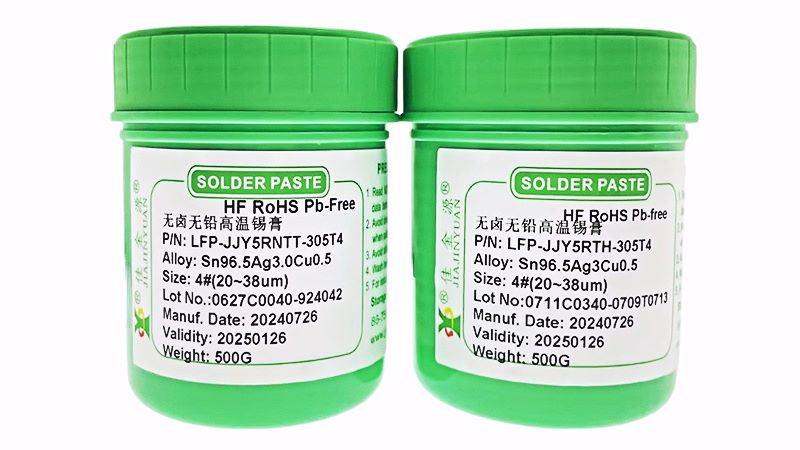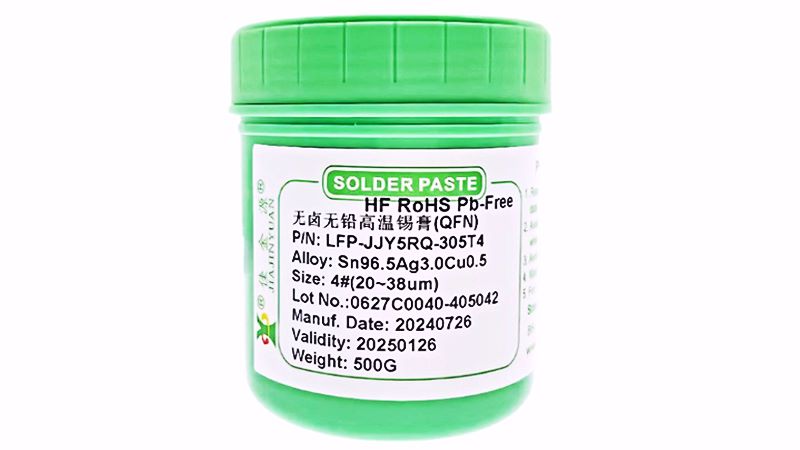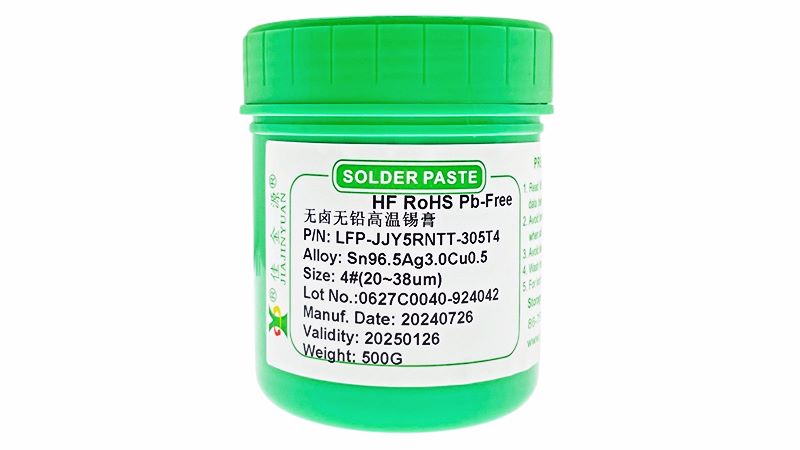Lead-free solder wireIts birth and rapid development are mainly due to a mandatory standard issued by the European Union.RoHSStandards, generally in the production process, if one wants to meet the standards, what requirements are needed and do they change? The following is an explanation from JJY solder Paste Manufacturer:

(1The tin dots form an inner arc shape;
(2The tin dots should be full, smooth, free of pinholes and rosin stains.
(3There should be moldings, and the length of the moldings should be1-1.2mmBetween;
(4The shape of the part feet shows that the fluidity of tin is good.
(5Tin surrounds the entire upper tin position and the foot of the part.
2. Solder joints are considered non-standard solder joints when the following situations occur:
(1False soldering: It seems to be soldered but actually doesn't. The main reasons are dirt on the solder pads and pins or insufficient flux and heating time.
(2Short circuit: Some foot parts are connected between feet by excess solder, causing a short circuit. Another phenomenon is that the feet come into contact with each other due to improper operation by the inspector using tweezers, bamboo sticks, etc., resulting in a short circuit. It also includes a short circuit between feet caused by residual tin slag.
(3Offset: Due to inaccurate positioning of the device before soldering or errors during soldering, the pins are not within the specified pad area.
(1)After tinning, it has been some time. The darkening of the solder joint color is mainly due to the normal oxidation of the solder joint, which causes this phenomenon.
(2)After tinting, the solder joints are dull. In this case, it is necessary to insist on regularly inspecting whether the metal composition in the lead-free tin wire meets the standards. In addition, when organic acid-based fluxes are left on hot surfaces or for too long, they may also cause a certain degree of dull color. It is recommended to clean them immediately after soldering.
To sum up the above, this is what needs to be explained to everyone. You can first understand it. You should know that the carrier used for the active agent in the tin wire can only be rosin. Currently, the soldering industry is looking for other things to replace rosin, and rosin itself has a rosin smell that cannot be changed. You won't notice it without a careful smell. There are also other reasons that affect the variation of odors: for instance, different active agents result in different odors. Generally, it is possible to blend them by adding fragrances. It is difficult to find a single odor that can absolutely meet all customer requirements. If you still have any questions, please feel free to consult!





 Tel:+86 0755 88366766
Tel:+86 0755 88366766 Phone:+86 18938660310
Phone:+86 18938660310 Email:sales@jjyhanxi.com
Email:sales@jjyhanxi.com Address:13/F,12/F, Building No. B,Qinghu Technology Park,Qingxiang Rd.,Qinghu Community, Longhua Subdistrict,Longhua District,Shenzhen City,GUANGDONG Province,P.R.C.(518027)
Address:13/F,12/F, Building No. B,Qinghu Technology Park,Qingxiang Rd.,Qinghu Community, Longhua Subdistrict,Longhua District,Shenzhen City,GUANGDONG Province,P.R.C.(518027) Guangdong Public Security Backup 44030902002666 name
Guangdong Public Security Backup 44030902002666 name
 WeChat
WeChat WeChat official account
WeChat official account
